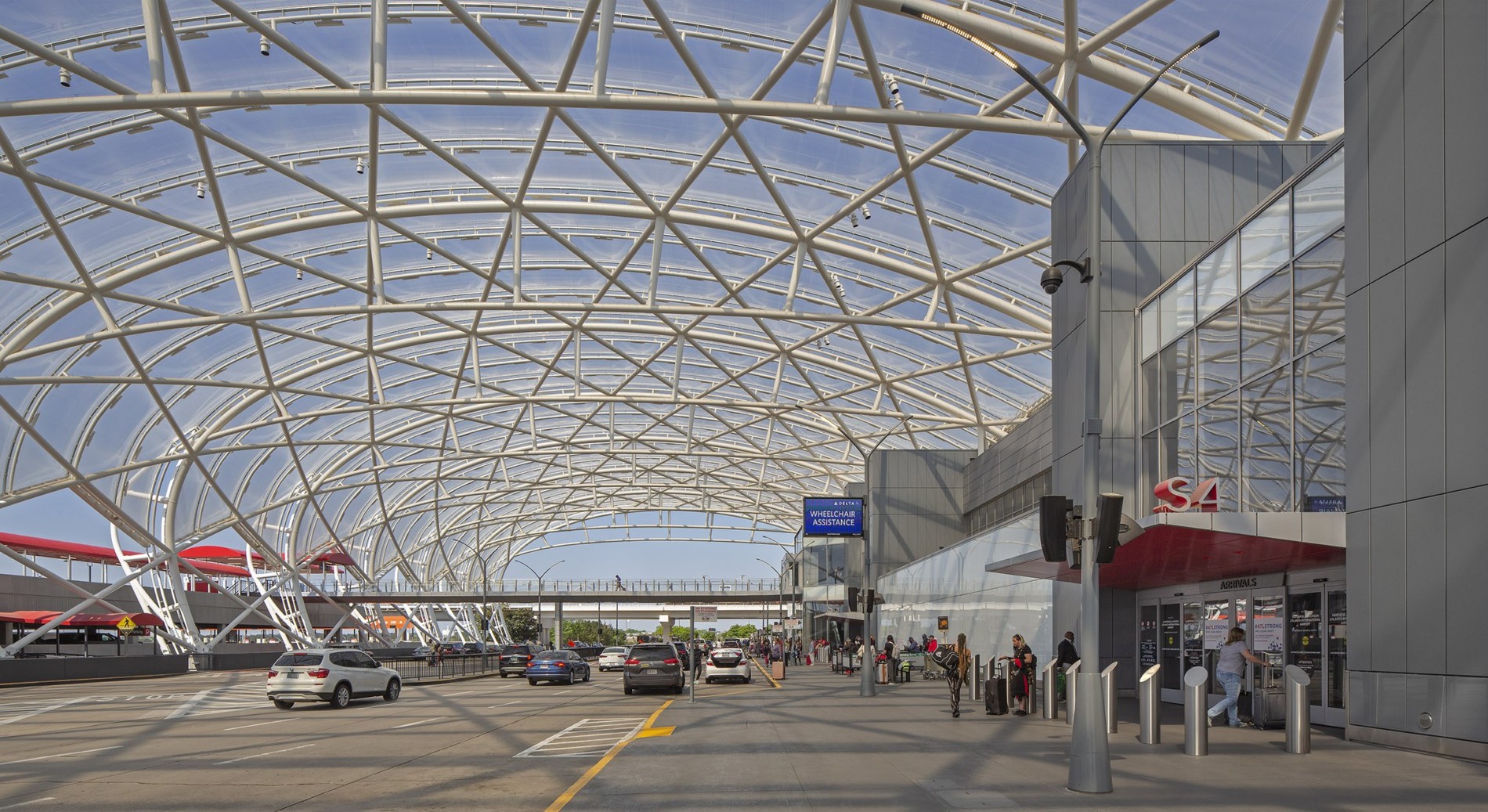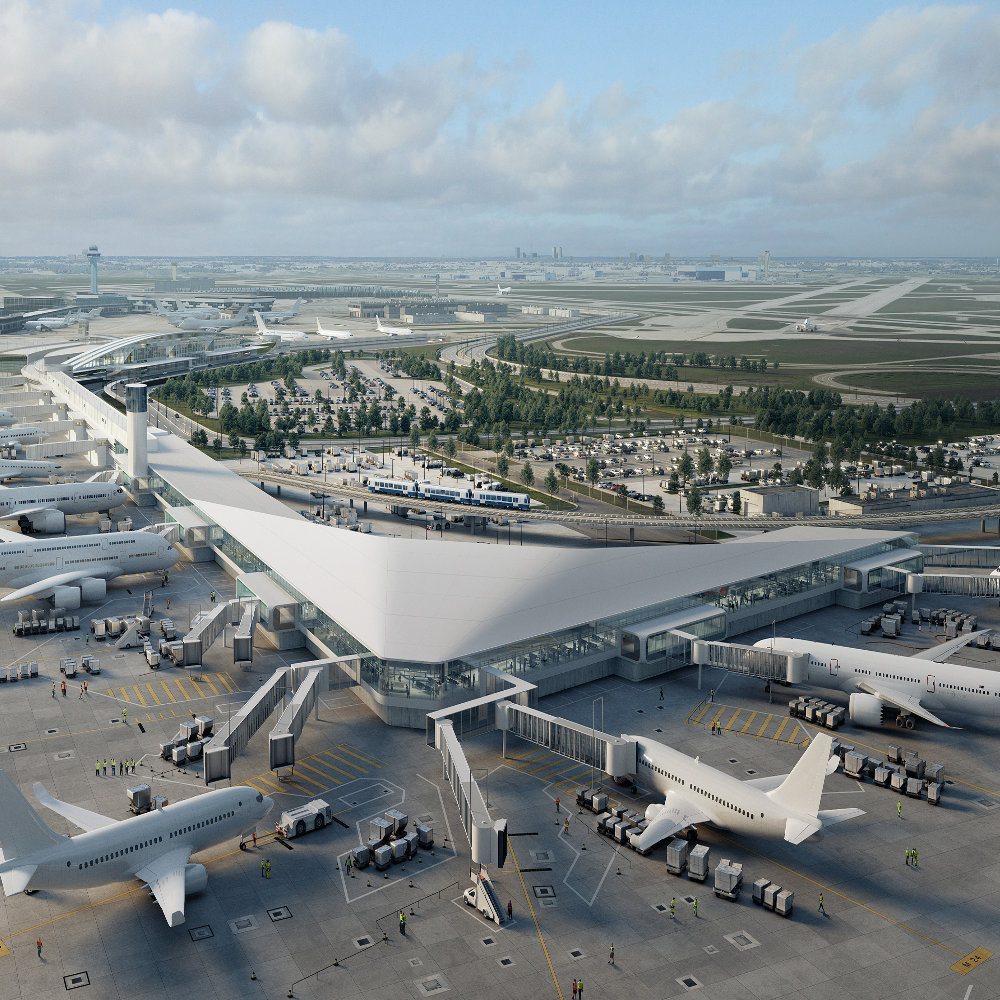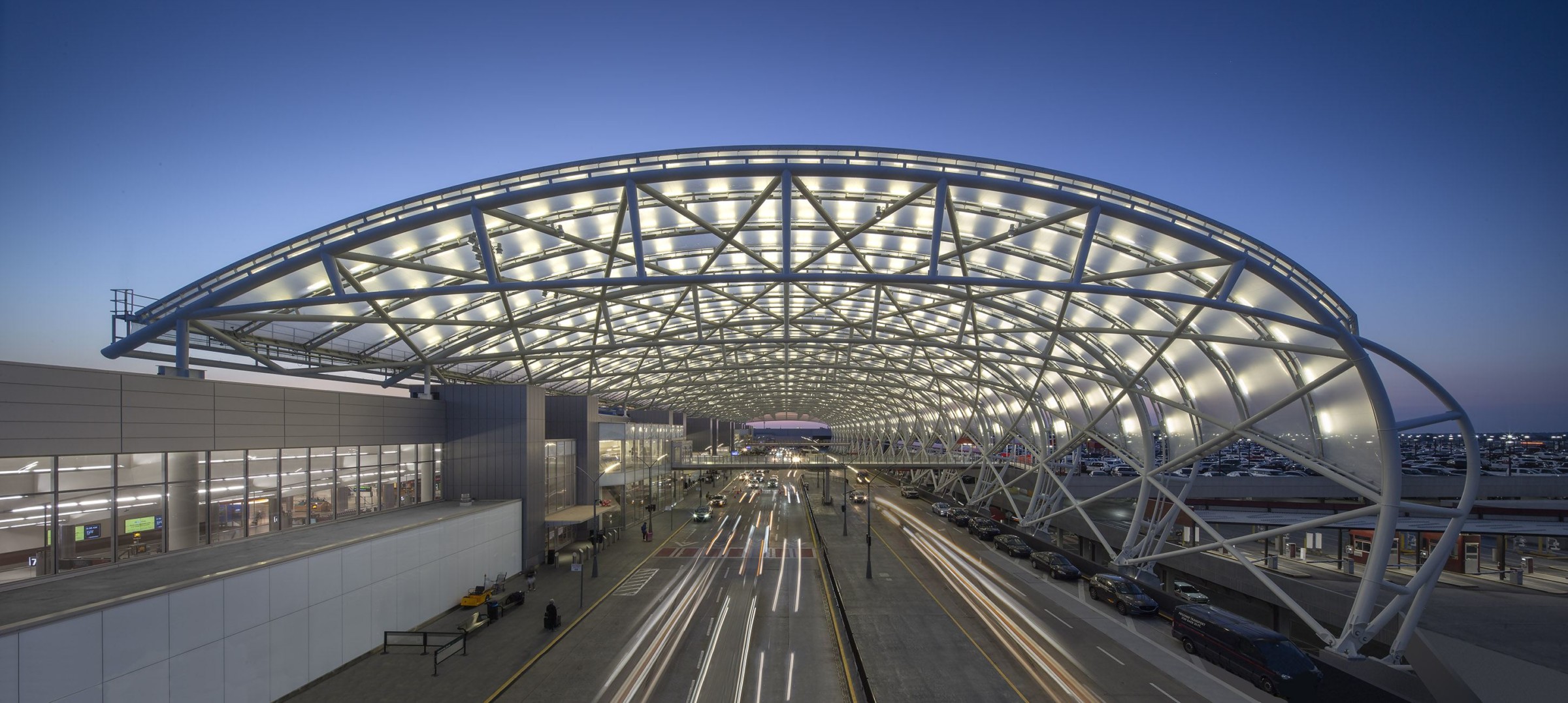
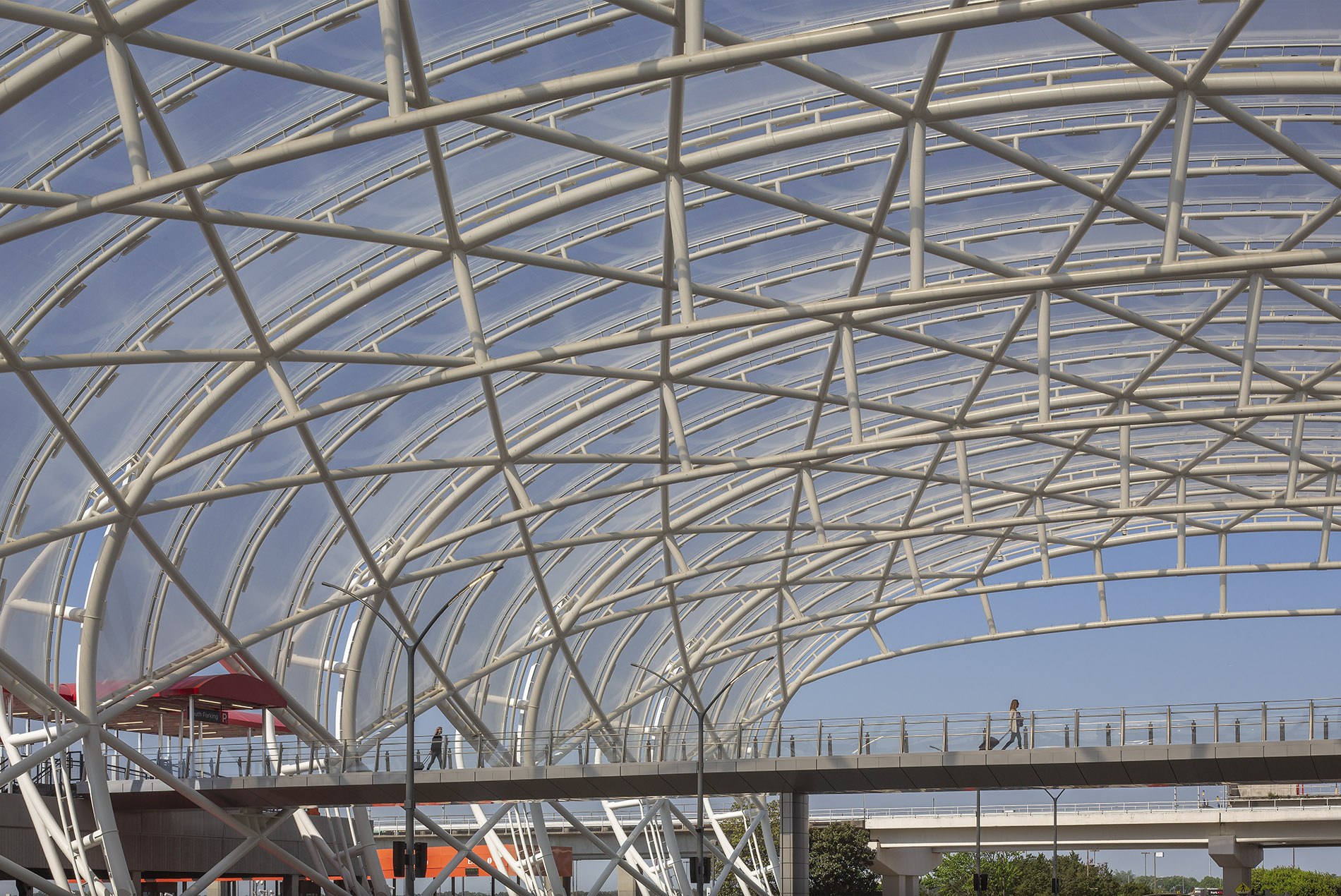
Four new pedestrian bridges above the roadways strengthen connections between the terminal and parking garages. It’s a much easier, safer pedestrian experience for travelers.
The canopies are designed with flexibility to accommodate future terminal expansion to the west and connect with any potential new roadways.
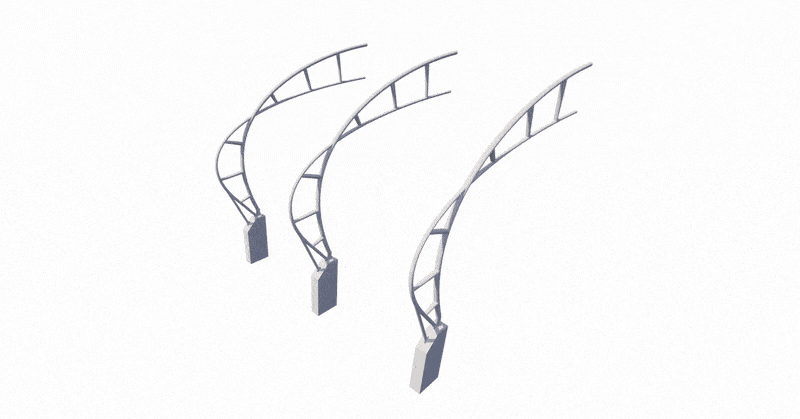
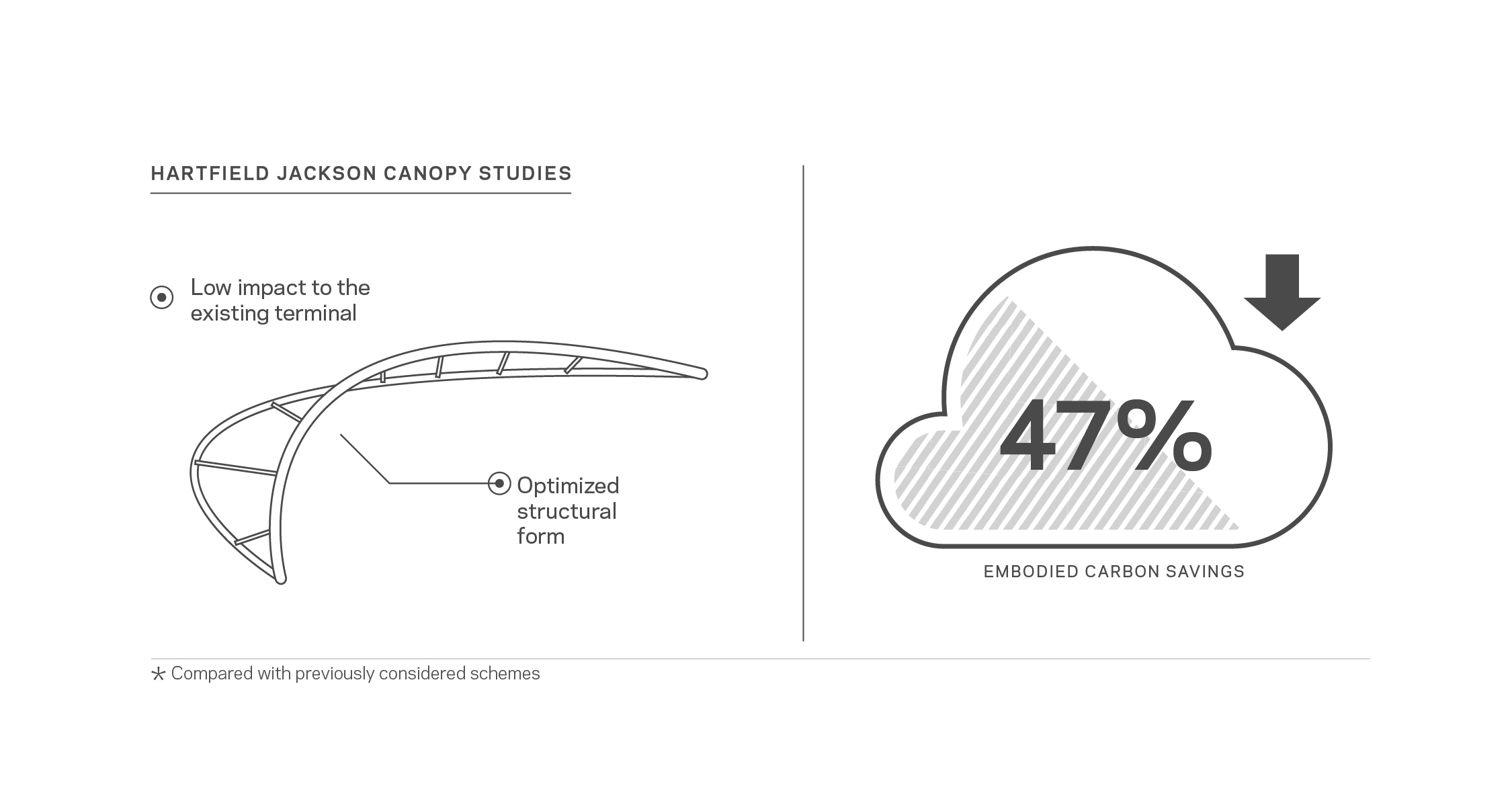
Airport leaders emphasized that construction of the massive dual canopies could not affect the busy airport’s operations.
HOK’s team developed a parametric modeling tool called STREAM that enabled the architects and engineers to quickly evaluate hundreds of design options for the canopy structure and form. Using STREAM shaved weeks off the design process and led the integrated architectural and engineering team to an innovative, ultra-efficient solution.
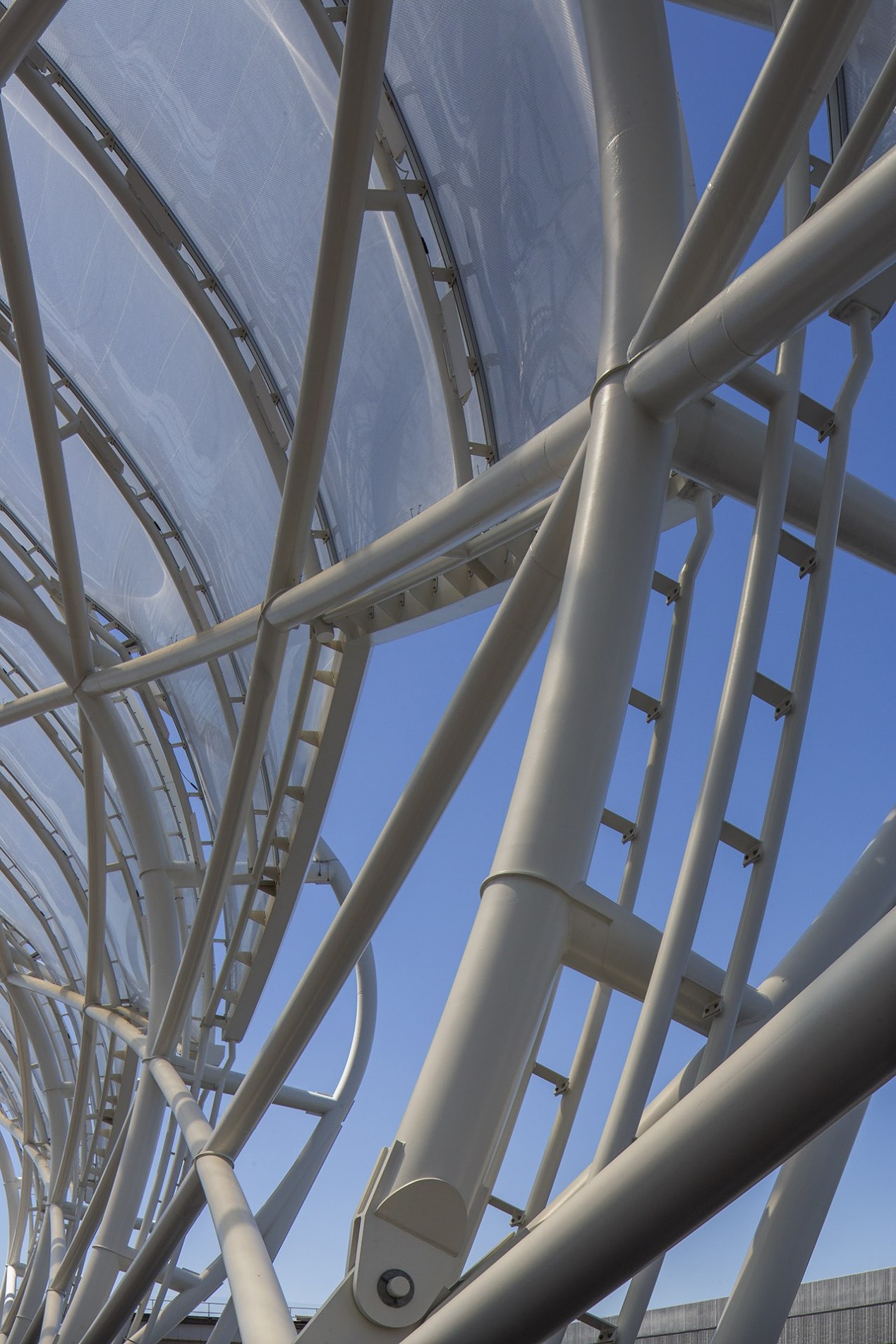
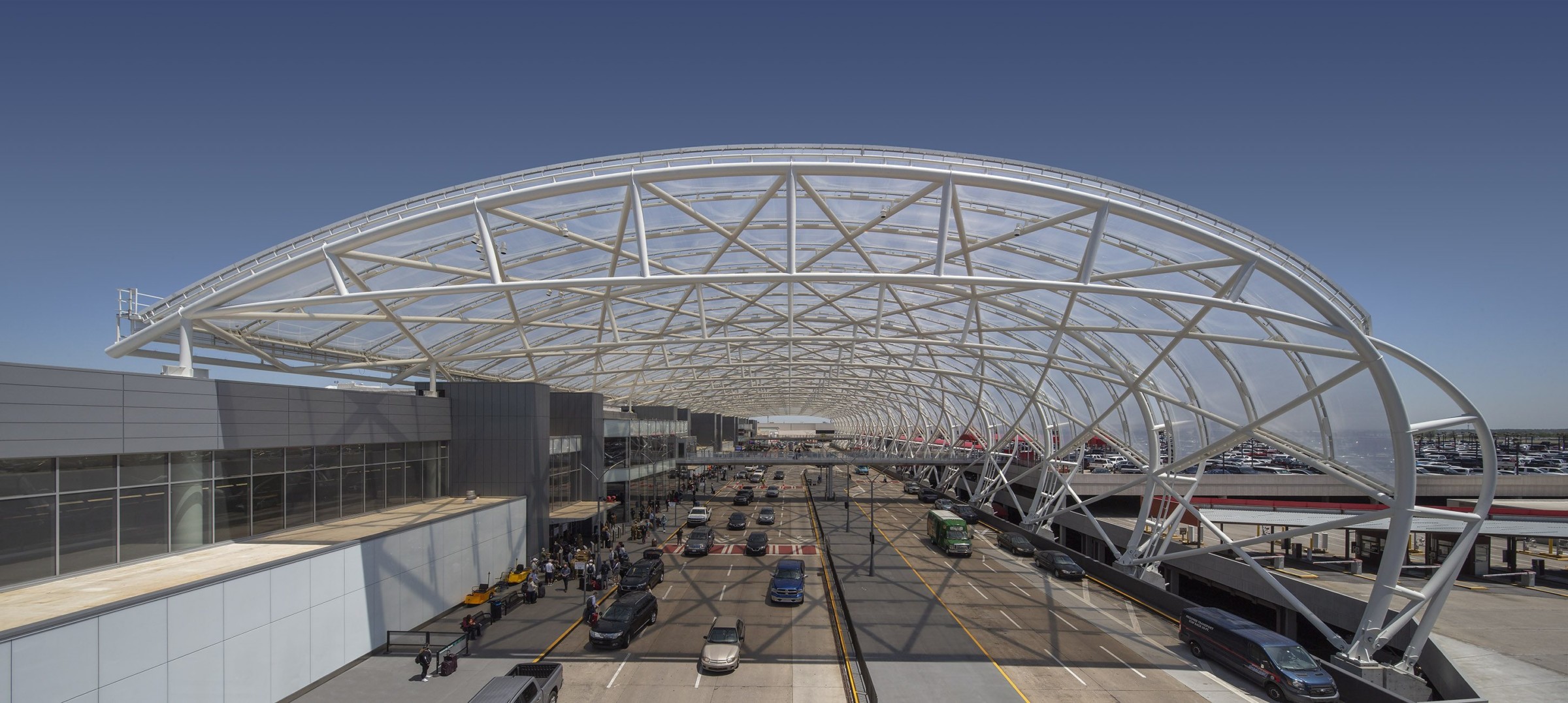
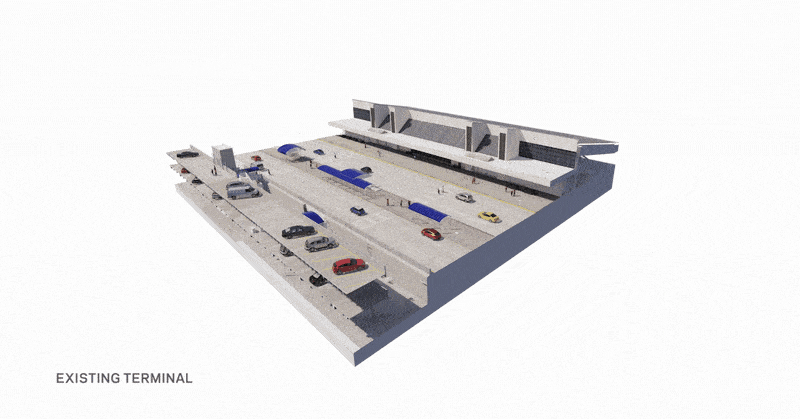
With a diagrid shape that transfers lateral forces away from the existing passenger terminal complex, the canopy form was driven by function.
Though the chord trusses appear to have gradually varying curvatures, they actually are made of distinct constant-curvature sections that are significantly less expensive to fabricate.
Cladding the canopies with ETFE instead of traditional glazing cut their total weight by half. The team determined that the existing terminal structure could support the lightweight canopies with minimal strengthening efforts. This avoided the need for new columns, braces and foundations atop curbside circulation space and the facilities below—saving on materials and labor while significantly reducing embodied carbon.
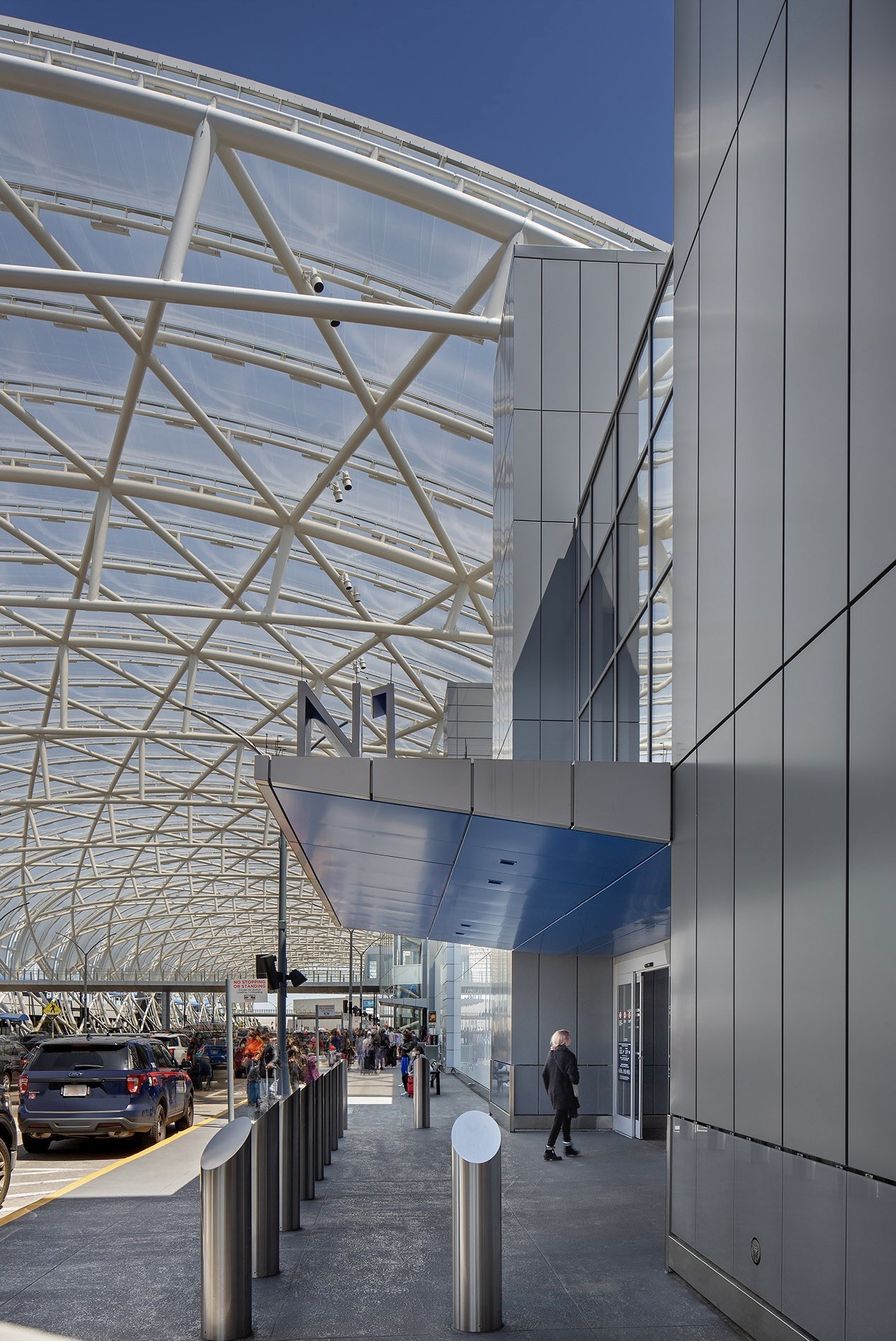
In addition to the canopies, HOK designed upgrades to the existing terminal.
The building’s precast concrete facade was re-skinned with metal panels, new storefront clerestories and glazing. This creates a new arrival experience by allowing more daylight to reach the interior of the terminal.
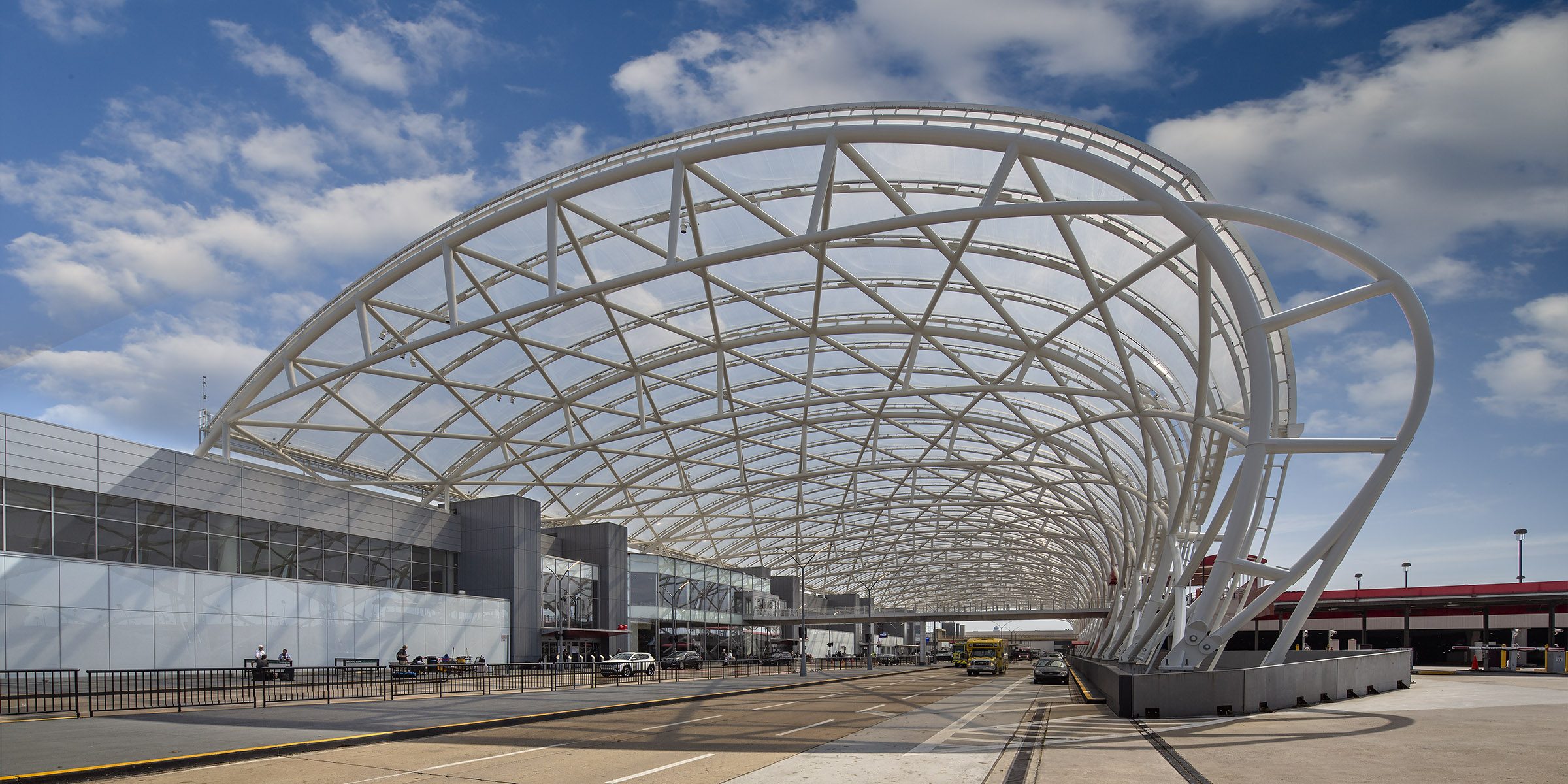
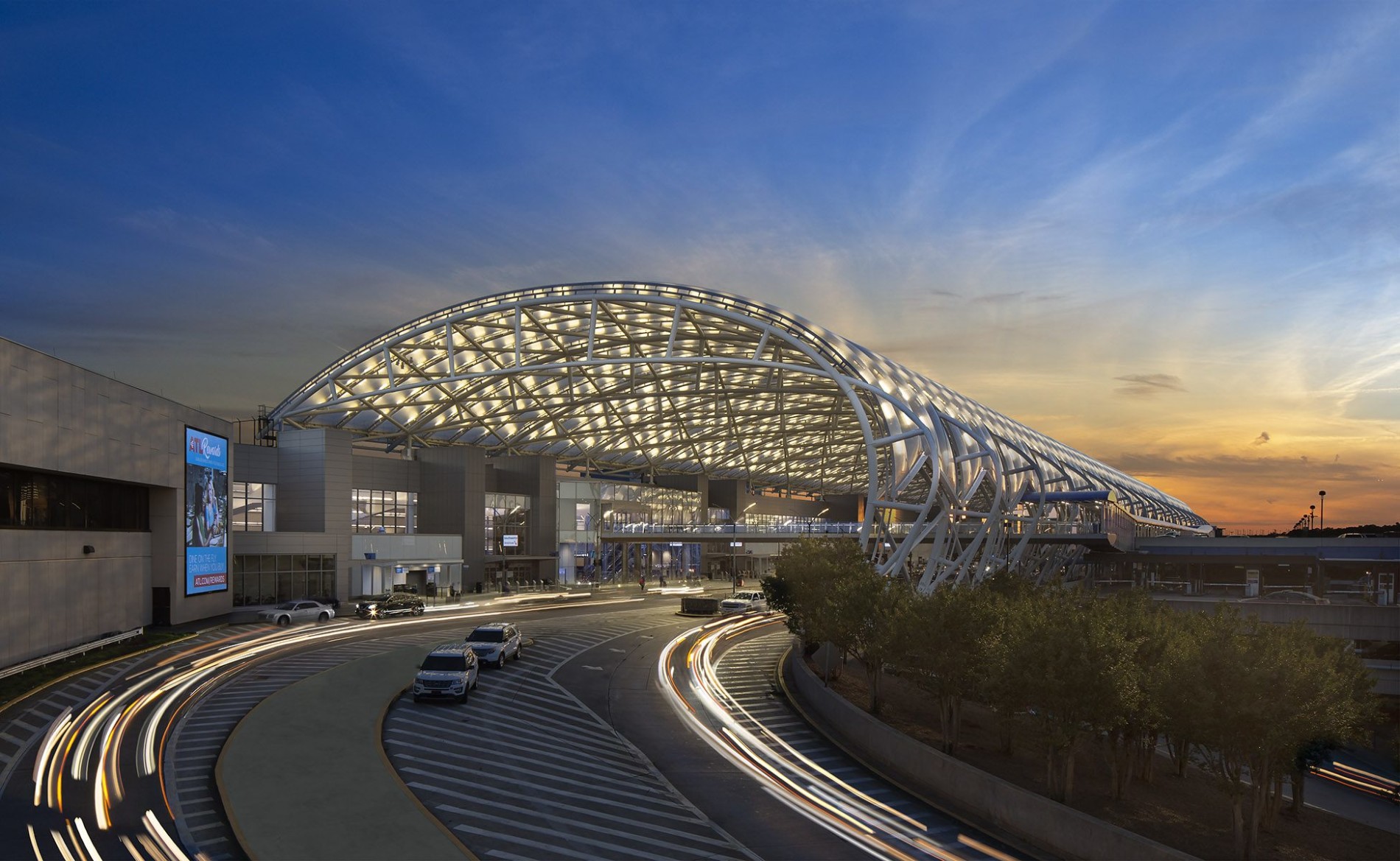
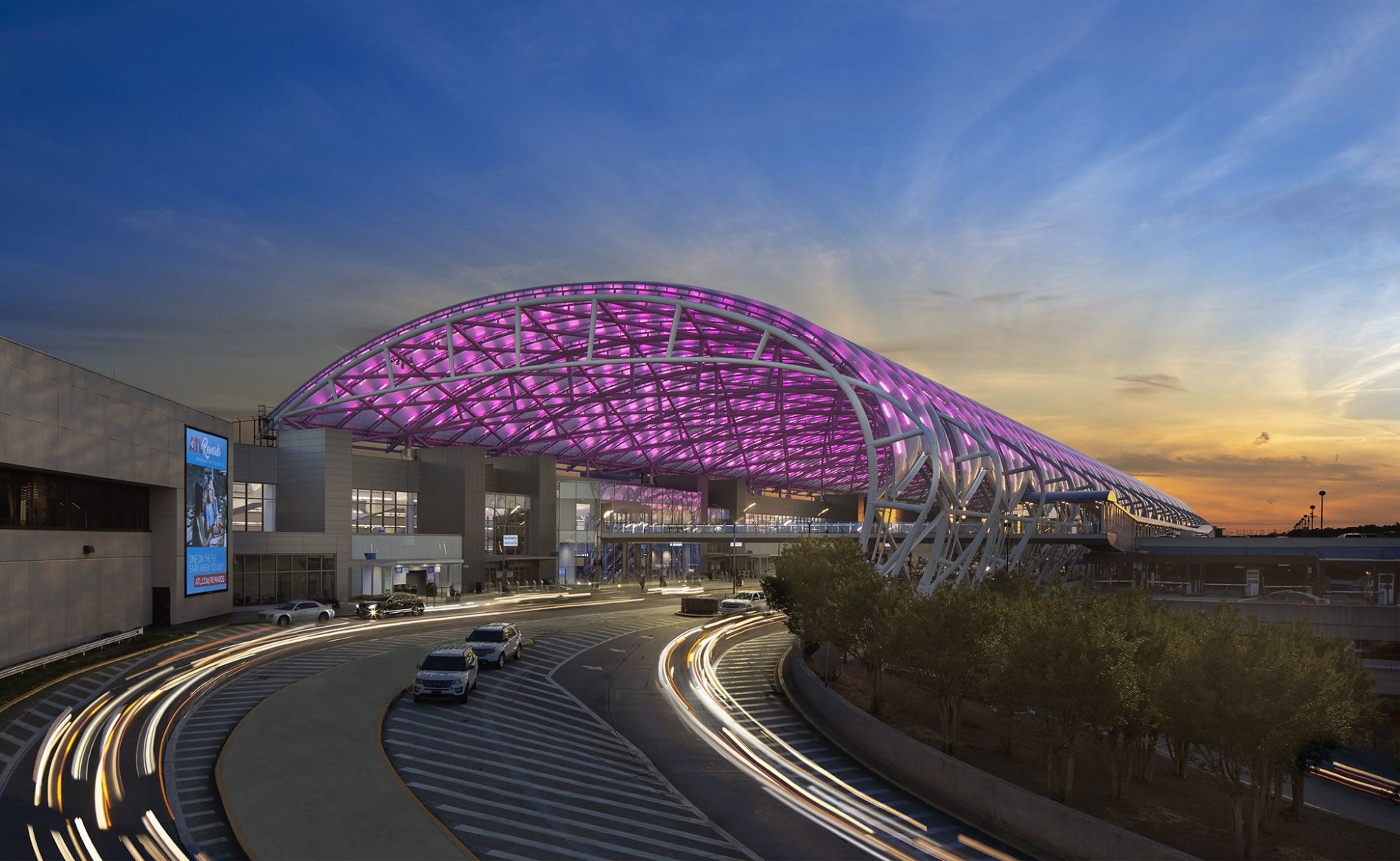
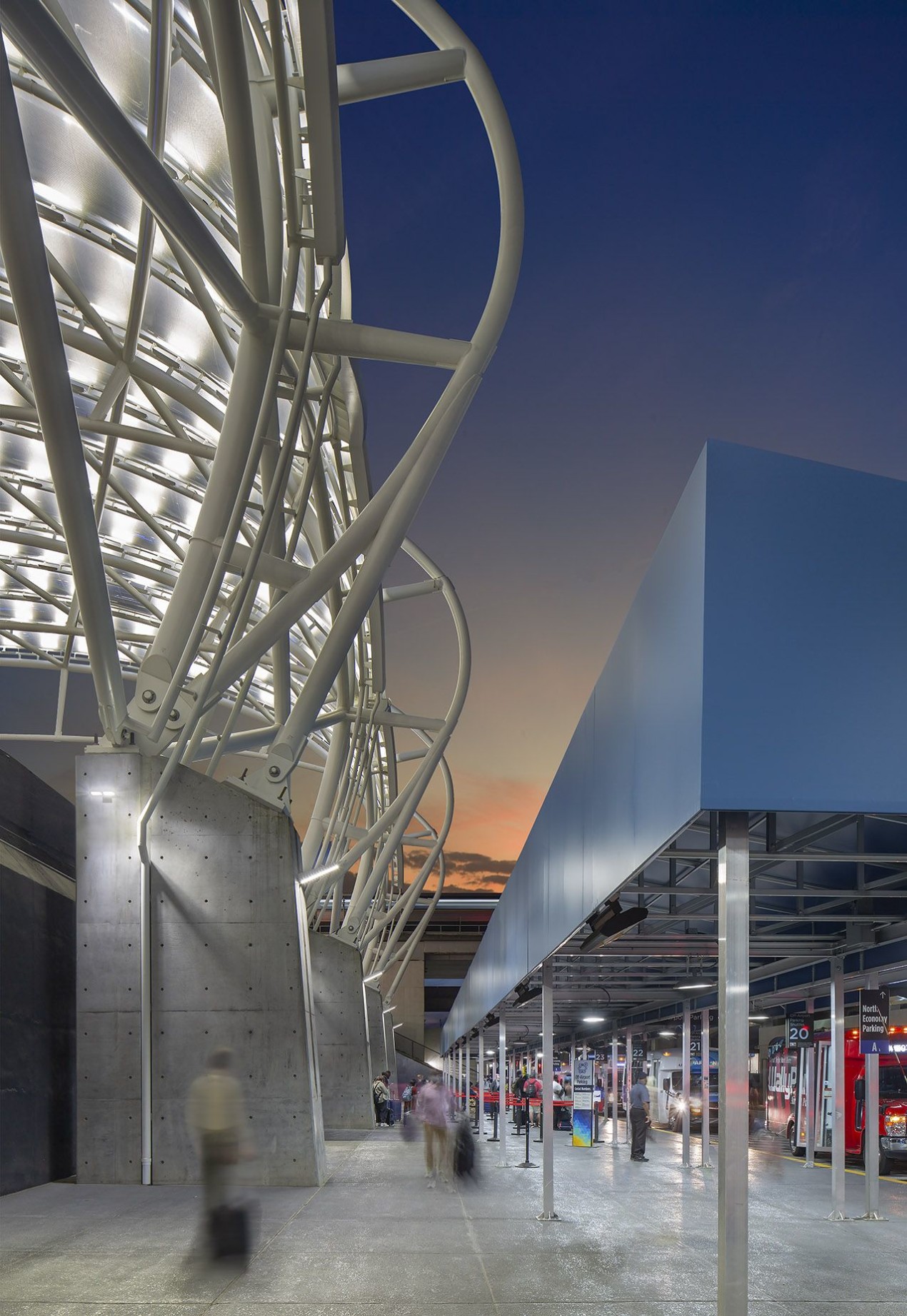
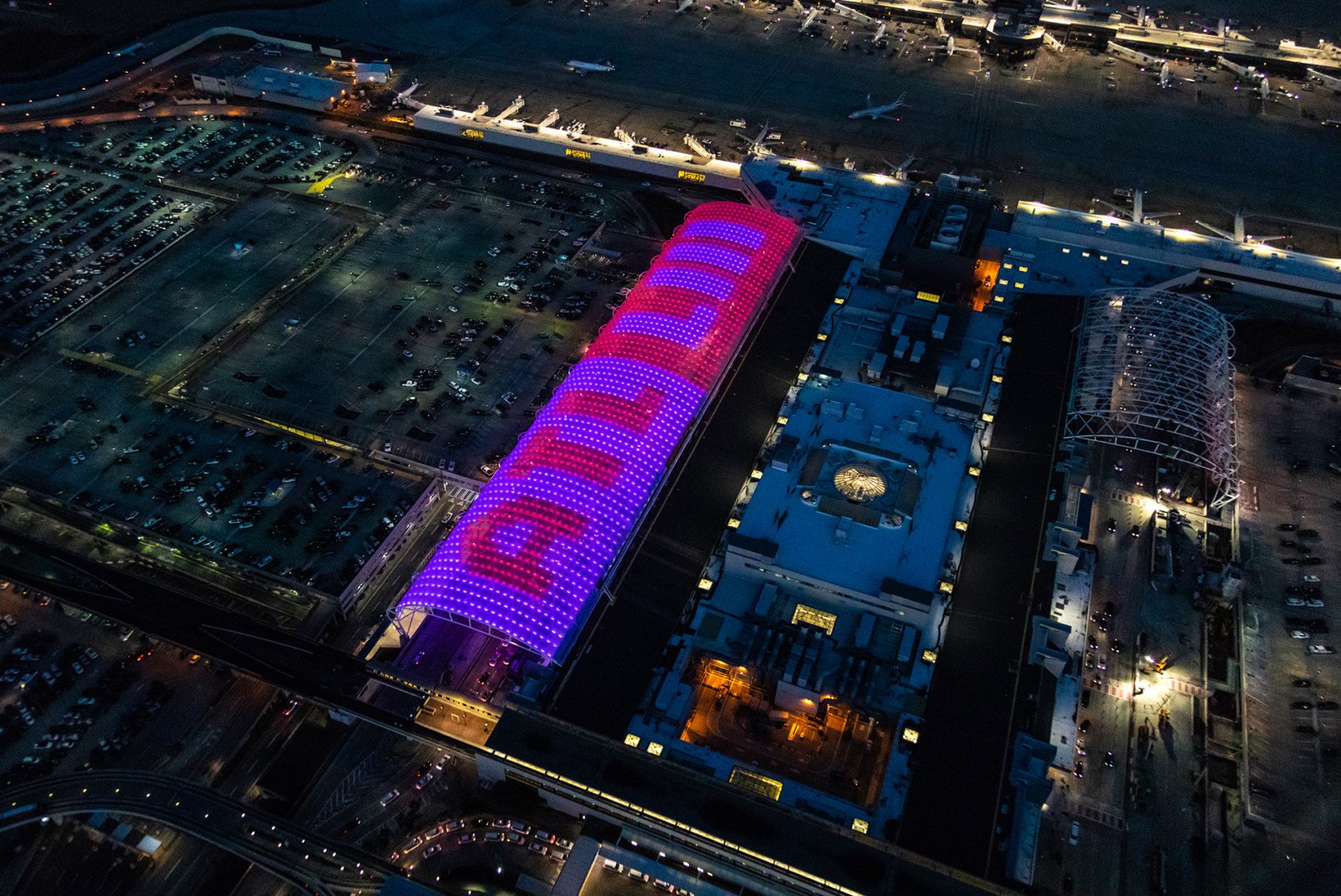
“Hartsfield-Jackson’s canopies serve a number of purposes at the airport. They have given new life to our Domestic terminal entry points, they provide safe and secure passage for our visitors and they have become iconic additions to the city’s skyline.”
— Balram Bheodari, General Manager of Hartsfield-Jackson Atlanta International Airport
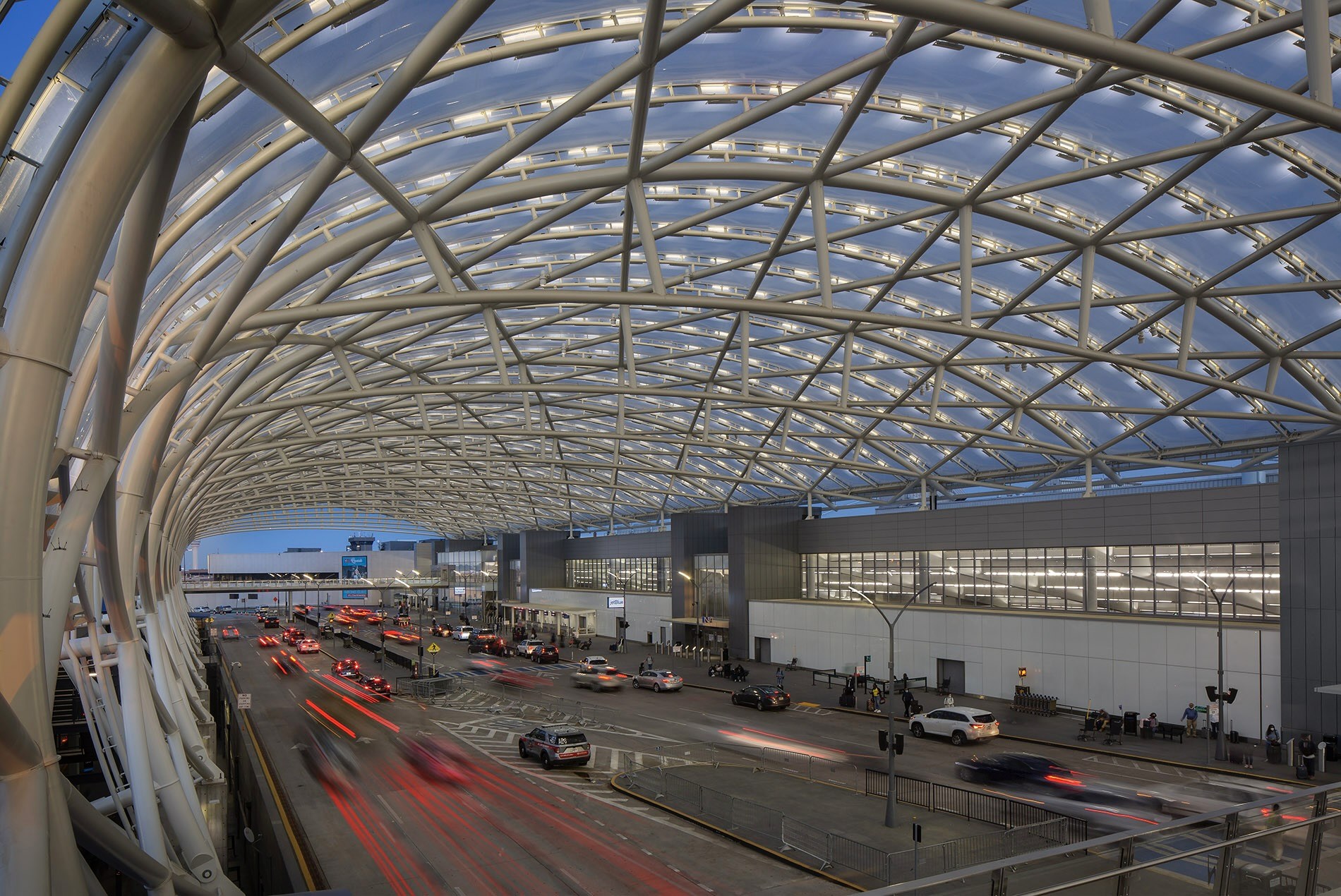
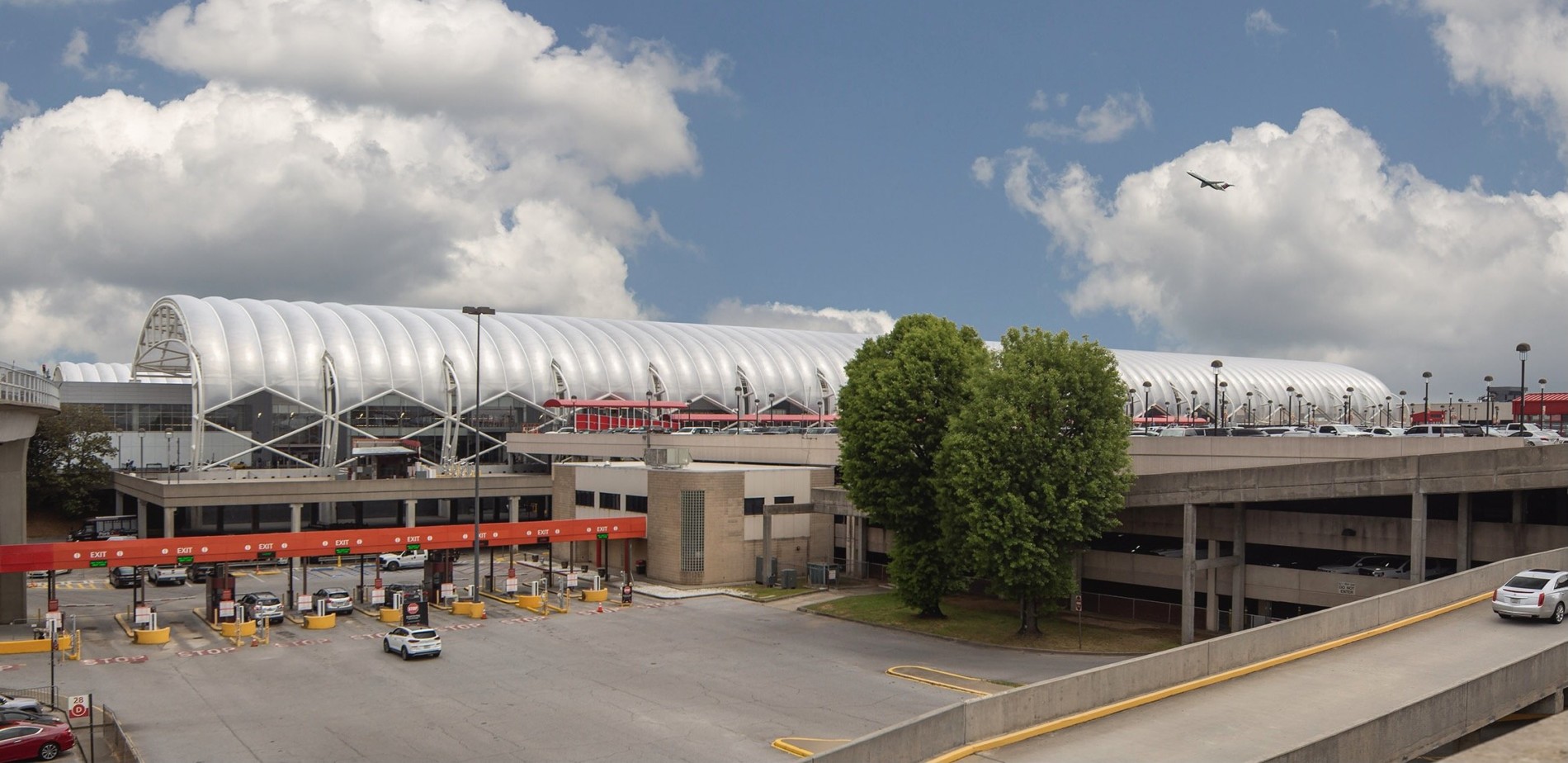
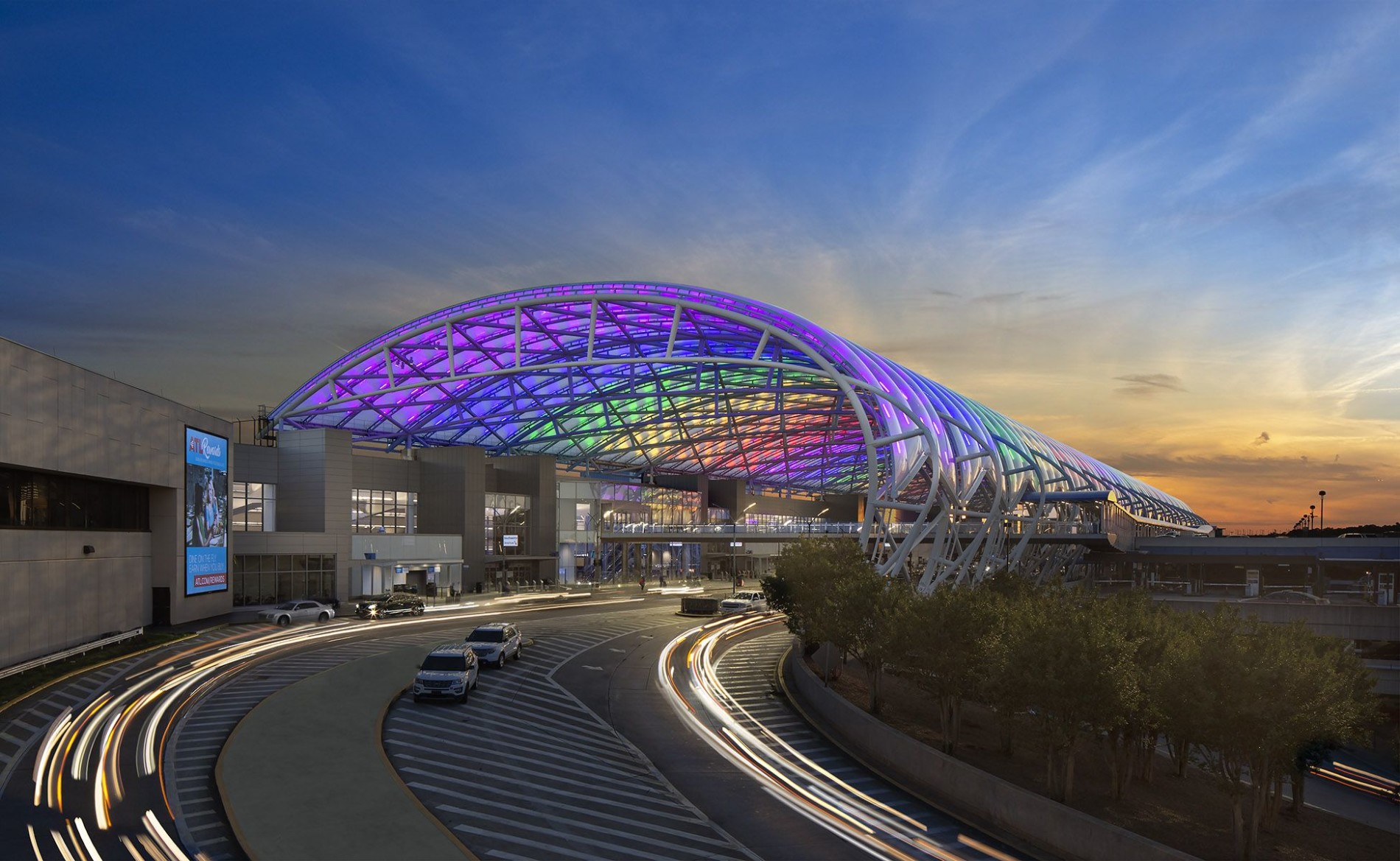
With more than 3,400 light fixtures embedded into each canopy, the programmable LED lighting display has become a symbol of Atlanta and a civic storytelling device for the airport.
At night, a mix of illuminated colors and patterns illuminate the twin structures, creating a dynamic canvas reflecting Atlanta’s personality as a bustling metropolis.
Passengers frequently share creative aerial photos of the digital artwork on their social media channels.
